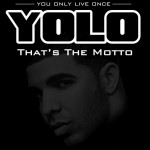A recent influx of embracing the present and future has overshadowed any appreciation we have for our pasts. As human beings living in the 21st century, we are bombarded with urges to “live in the moment” and “seize the day”. We have become obsessed with knowledge about the end of the world (such as 2012…which is rapidly approaching!). Even popular media figures have enlightened us with quotes to live by, such as Drake’s famously rapped motto “YOLO – You Only Live Once”.
This disconnection doesn’t seem to be purposeful, but merely a result of technological advances (everybody impatiently awaiting the newest iPhone model) and the fact that human beings are currently in a constant forward plow towards an obscure future (going to college in order to get into graduate school in order to get a job in order to raise a family, etc).
However, as Professor Beisaw made us all aware of in class on Thursday, the past is interwoven into every single facet of our daily lives. Although we tend to neglect this fact, we aren’t entirely oblivious to the past – but we only use it when it is convenient (to describe the unique nationality you inherited from your father’s uncle’s mother’s Portuguese brother). We ignore it when it is hurtful (losing a war) or shameful (slavery in colonial America). As inferred in Bernbeck and Pollock’s article “Ayodhya, Archaeology, and Identity”, human beings manipulate the past, and therefore archaeology, so that it becomes a glamorized version that we can be proud of. This is displayed through ascending and descending anachronisms. An ascending anachronism attempts to push a past event farther back in time so that it appears to be more distant, while a descending anachronism brings events closer to the present. By ascending events that are dishonorable and descending events that are more respectable, people take control of their histories and create a version to fit their desires.
This is where the public misunderstands archaeology – archaeology provides the facts of the past, but these facts are misconstrued by public manipulations. Mythical history “stresses continuity of past and present” (Bernbeck and Pollock 140), and many political issues today are based on this manipulation. For example, the current battle between the Hindus and Muslims in India displays how “bringing the past very near to the present helps to legitimate revenge for past injuries” (Bernbeck and Pollock 140). This is just one example of how issues based far in the past are manipulated by present day humans in order to solve ancient quarrels that probably don’t even matter in the slightest bit.
This just proves to show how archaeology is relevant to EVERYTHING. Archaeology is the analysis of our pasts but places so much emphasis on the bigger picture, and therefore has so much substantial influence in our present and our futures. People misunderstand this aspect of archaeology because of our manipulation of the past, as well as our inherent obsession with living in the now and embracing our futures. The truth is, the past is what makes us who we are and what gives us a sense of identity. The present and future are nothing without the past, and to say “what’s done is done” is ignorant. That present and future are nothing without the influence of the past – and that’s where archaeology comes in – it is the vehicle through which the past is revealed and interwoven into our lives.

